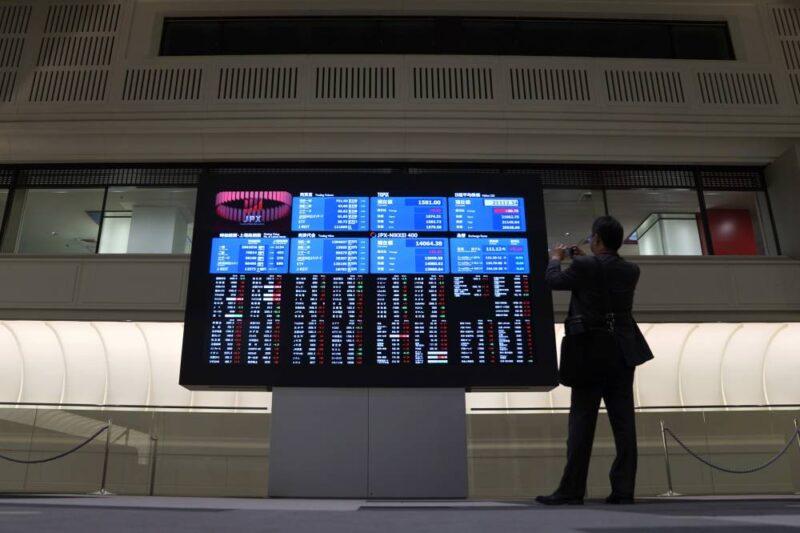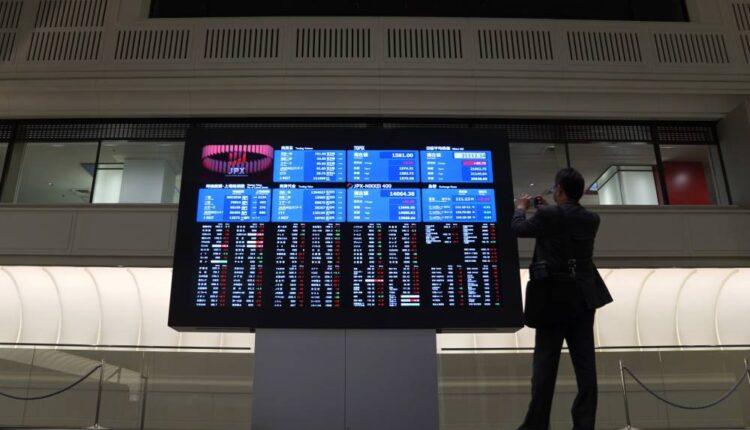
- Stocks in Asia Pacific were mixed on Tuesday.
- China on Tuesday said its official manufacturing PMI for March came in at 52.0, indicating an expansion and defying expectations of a contraction. Analysts polled by Reuters had expected the figure to come in at 45.
- Oil prices rebounded from the previous day's plunge in the afternoon of Asian trading hours on Tuesday after plummeting on Monday to levels not seen in almost two decades.
Stocks in Asia Pacific were mixed on Tuesday as China's official manufacturing Purchasing Managers' Index for March came in better than some analysts expected.
Mainland Chinese stocks edged higher on the day, with the Shanghai composite up 0.11% to about 2,750.30 while the Shenzhen composite added 0.505% to approximately 1,665.93. The Shenzhen component rose 0.58% to 9,962.30. Hong Kong's Hang Seng index also closed 1.85% higher at 23,603.48.
China on Tuesday said its official manufacturing PMI for March came in at 52.0, indicating an expansion and defying expectations of a contraction. Analysts polled by Reuters had expected the figure to come in at 45 for the month. PMI readings below 50 signify a contraction, while figures above that level indicate an expansion.
"Despite a rebound in China's PMIs in March (manufacturing: 52.0; nonmanufacturing: 52.3), the monthly indicators, notably industrial production and retail sales, likely still fell 11.6% (year-on-year) and 6.0% (year-on-year) in March," economists at ANZ said in a note following the data release.
"China's March PMIs, which jumped back above the threshold 50-levels, are not surprising if one recalls that the contraction in February was dramatic, at a 15-year low," the economists said. "The outlook for Q2 continues to be concerning due to an acute drop in external demand and lacklustre domestic demand."
Bank of Singapore's Eli Lee said a "fuller picture" is likely to emerge on Wednesday when a private PMI survey by Caixin and IHS Markit is released.
"I think the Chinese government is trying to project strength at this point in time to show that they're going back to business and … their economy (is) on strong footing," said Lee, who is head of investment strategy at Bank of Singapore.
"China is still very … dependent on international demand for its goods and if the rest of the world falters in terms of economic growth, then it should prove to be quite difficult for the Chinese as well," Lee told CNBC's "Capital Connection" on Tuesday. "Over the longer-term the market contour of this crisis for China markets is more likely to be a W or a U versus a V-shape."
In February, the official manufacturing PMI plunged to a record low of 35.7 as the country continued to grapple with containing the coronavirus outbreak as well as returning to work after an extensive lockdown. Investors have been watching economic data releases from China for clues on the scale of the economic impact from the outbreak, which was first reported in the country.
In South Korea, stocks led gains among the region's major markets. The Kospi rose 2.19% on the day to 1,754.64 while the Kosdaq index gained 4.97% to close at 569.07.
Australian shares reversed earlier gains, with the S&P/ASX 200 closing 2.02% lower at 5,076.80. The moves came after the index got off to a flying start on Monday and surged by 7%.
Japan's Nikkei 225 also closed lower as it dipped 0.88% to 18,917.01 while the Topix index fell 2.26% to end its trading day at 1,403.04.
Overall, the MSCI Asia ex-Japan index was 1.3% higher.
US crude futures rebound
U.S. crude futures rebounded from the previous day's plunge in the afternoon of Asian trading hours on Tuesday, rising 5.18% to $21.13 per barrel. International benchmark Brent crude futures also traded higher by 2.72% at $23.38 per barrel.
The moves came after oil prices plummeted Monday to levels not seen in almost two decades — Brent fell 8.7% to settle at $22.76 per barrel, a price last seen in 2002. U.S. crude fell 6.6%, or $1.42, to settle at $20.09, its lowest level since February 2002.
The U.S. dollar index, which tracks the greenback against a basket of its peers, was last at 99.461, below levels above 100 seen last week.
The Japanese yen traded at 108.43 per dollar after touching an earlier high of 107.72. The Australian dollar changed hands at $0.6159, still above levels below $0.6 seen last week.
— CNBC's Pippa Stevens and Huileng Tan contributed to this report.
Source: cnbc.com

